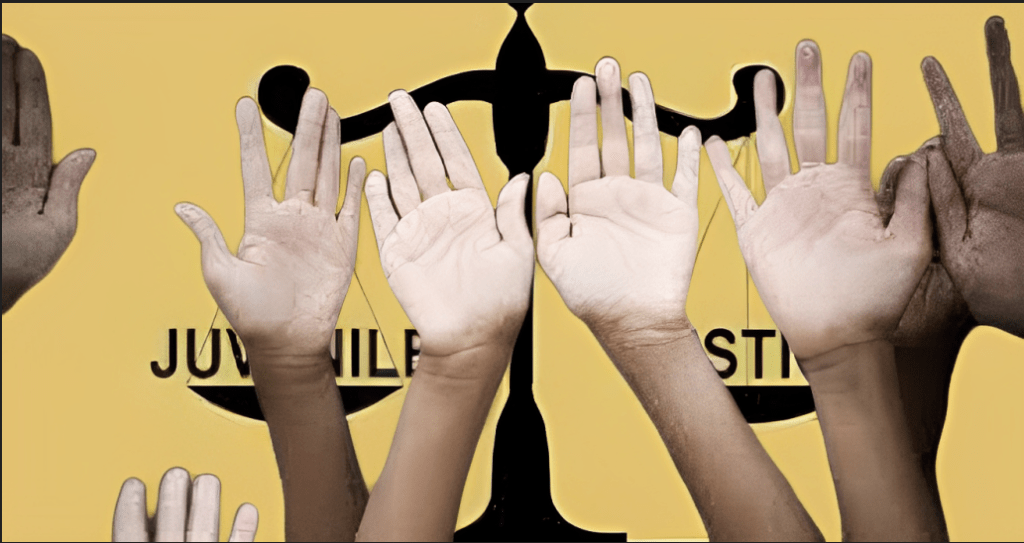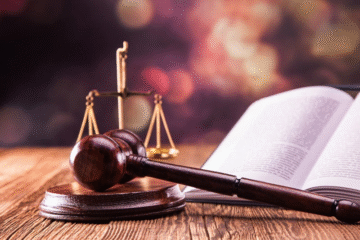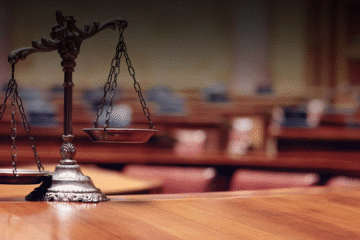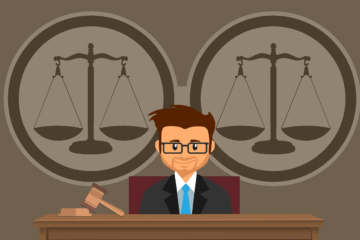
This article is written by S. Simi Sthebiya Mary of Sathyabama Institute of Science and Technology, an intern under legal Vidhiya.
ABSTRACT-
Children are innocent when they are born, but a variety of conditions lead to many of them developing behaviours that are deemed to be “in conflict with the law” or otherwise delinquent. These actions can be emotional outbursts, small-time thefts, drug misuse, aggressive or violent behaviour, or more major criminal offences. These habits are frequently picked up early in life. However, parents, relatives, and other adults who look after youngsters can teach them how to handle their emotions without resorting to violence. Strong relationships with their parents and other people help children internalise societal standards, according to studies, and these bonds serve as a deterrent to deviant inclinations. Children must be preserved since they are one of the future generation’s most valuable assets.
INTRODUCTION –
The Juvenile Justice (Care and Protection of Children) Act, 2015, which was enacted by the Government of India, adopts a child-friendly approach to provide for the proper care, protection, development, treatment, and social re-integration of children in challenging situations. “Children in Conflict with the Law” refers to anyone under the age of 18 who interacts with the legal system after being suspected or charged with committing a crime. When a youngster engages in minor offences like loitering, begging, or drinking, as well as more serious or horrific ones like rape or murder, they may run afoul of the law.
KEYWORD-
Children, protection, justices, offences, crime.
JUVENILE JUSTICES BOARD –
The Latin term juvenis, which meaning young, is where the word juvenile first appeared. Juvenile justice is thus a juvenile justice system. In India, dealing with juveniles is dealt with through a separate justice system. It is believed that when juveniles are subjected to the same legal system or process as adult offenders, the children themselves may become victims of the system.
A Chief Judicial Magistrate or Metropolitan Magistrate (with at least three years of experience) and two social workers make up the juvenile justice board, with the requirement that at least one of them be a woman. Every stage of the way, the Board makes sure to tell the juvenile’s guardians or parents. Additionally, they make sure that all of a child’s rights are upheld and that children can access legal aid through organisations that provide legal services. In other words, JJB is vital to safeguarding, overseeing, and managing each step of the process of looking into a young person who has broken the law.
TYPES OF TRIAL –
Under the JJB Act of 2015, numerous categories of offences committed by children in violation of the law have been specified as follows:
- Petty offences
- Serious offences
- Heinous offences
Petty offences-
Petty offences are those for which the Indian Penal Code or any other currently in force law allows for a maximum sentence of three years in jail.
Serious offences-
Serious offences are those for which the Indian Penal Code or any other currently in effect statute imposes a sentence of imprisonment between three and seven years.
Heinous offences-
The most heinous crimes committed by children in violation of the law include those for which the Indian Penal Code or any other currently in force statute specifies a minimum sentence of seven years or more in jail.
Howard Becker divided adolescent delinquency into four categories in 1966-
- Individual delinquency
- Group supported delinquency
- Organised delinquency
- Situational delinquency
Individual delinquency-
Individual offences committed by minors come under this category. According to psychologists, it mainly arises from dysfunctional familial relationship patterns.
Group supported delinquency-
They primarily have sociocultural origins. These crimes are committed by children in groups. These come from learned habits from associates rather than from own psychology.
Organised delinquency-
If they are committed by organised groups that are bound by group rules, these offences are more serious in nature. Complex centralised businesses engage in criminal activity like theft and fraud.
Situational delinquency-
Such criminality is not mentally based; instead, it is the outcome of poor impulse control.
CONFLICT BETWEEN CHILD RIGHTS AND THE LAW-
- Except in cases where the consequences of release would be more severe than detention, every child has the ability to post bail.
- They are protected from being “arrested” by law. When a minor suspect is detained by the police, he is not held in the same facility as adult offenders.
- The juvenile police unit or a child welfare police officer receives custody of the youngster. Not even handcuffs are on him. The parents are notified right away.
- The police only note the complaint in the General Diary and do not file a formal police report (FIR) unless the youngster commits a terrible crime or any other crime in the company of adults.
- His identity is kept private to avoid the kid being stigmatised. The 2015 Act prohibits future opportunities from being denied to youth who have committed crimes.
- After they turn eighteen and typically up to the age of twenty-one, state governments are required to offer juveniles aftercare in financial or other matters.
THE BOARD’S FUNCTIONS AND RESPONSIBILITIES-
- To guarantee the child’s and the parent’s or guardian’s informed participation in each and every step of the procedure.
- To guarantee that children’s rights are upheld during the process of kidnapping, investigation, aftercare, and rehabilitation.
- If the kid is unable to grasp the language being used to progress, the board shall provide a qualified translator or interpreter.
- To carry out an investigation to determine who is qualified to care for children who are in violation of the law.
- Passing a final order that resolves the issue and includes a personalised care plan for the child’s rehabilitation, as well as any necessary follow-up by the probation officer, the district child protection unit, or a representative of a non-governmental organisation.
- To undertake at least one inspection, visit per month at residential facilities for children in trouble with the law and to make recommendations for the District Child Protection Unit and the State Government regarding actions to be taken to improve the quality of services.
- To direct the police, in response to a complaint, to file a FIR for any offences committed against any child who was in violation of the law or who required care and protection under the Act or any other legislation.
- To make sure the child has access to legal aid.
MEASUREMENT OF AGE-
- The term “Juvenile in Conflict with Law” refers to those who were under the age of 18 when the offence was committed.
- Within a 30-day window, the age determination process must be finished.
- The Board determines a person’s juvenility and places them in jail or an observation home based on their physical appearance and supporting documentation.
- The Board uses the matriculation certificate, the date of birth certificate from the school, and the birth certificate issued by the Municipal Authority, Corporation, or Panchayat as proof when determining an applicant’s age.
- In the absence of these documents, the Medical Board’s view is taken into consideration.
ARREST BY POLICE-
When a kid under the age of 18 is the subject of a FIR or complaint, that youngster will be brought before a juvenile officer or child welfare officer who is given specific authority under the Juvenile Justice Act. Then, it will be determined if the minor committed a minor offence or a severe offence by conducting an investigation. The juvenile justice board may determine the following penalties for a child in violation of the law depending on the type of offence:
- Let the child go after giving him or her advice.
- Request that the youngster get counselling and locate his or her parents.
- Request that the youngster perform volunteer work
- Release the young person on probation in recognition of his exemplary behaviour.
OBSERVATION FACILITIES FOR YOUNG OFFENDERS-
Children who have been neglected and juvenile offenders are housed in observation homes while the juvenile court considers their case. They are stuffed with of services and protection for young offenders. It is a facility where juvenile offenders can be instilled with moral principles and positive thoughts in order to prevent them from committing crimes again. Every district or collection of districts has observation residences, which are run by the state government. Delinquents are given education and training at observant homes to ensure their bright future. The Juvenile Justice and Protection Act of 2015’s Section 47 makes reference to it.
SPECIALISED FACILITIES FOR YOUNG OFFENDERS-
Every district or collection of districts also has special homes, which are run by the state government. Rehabilitating young offenders is the special aim’s primary goal or objective. The special houses that offer juvenile offenders rehabilitation and socialisation offer a range of services. Section 48 of the 2015 Juvenile Justice Act makes reference to it.
INDIAN CONSTITUTIONAL LAW, CRIMINAL PROCEDURE CODE, AND PENAL CODE ALL HAVE PROVISIONS RELATING TO MINORS-
According to the Juvenile Justice (Care and Protection) Act 2000, a juvenile is a person who is a minor or, more specifically, who is under the age of 18. A child’s intellect is capable of understanding many minute details that adults frequently are unable to comprehend or recognise. The thinking of an adult and a child differ greatly, and a youngster’s mind is flexible and productive. As a result of these stark distinctions, the Indian legal system needs to have particular juvenile laws.
RULES PERTAINING TO THE INDIAN PENAL CODE OF 1860-
Nothing committed by a person under the age of seven is considered an offence according to the Indian Penal Code of 1860. ‘Doli Incapax’ is the name of this tenet. You can find this in Section 82. Nothing committed by a kid who is older than seven but younger than twelve is considered a crime under Section 83 of the Indian Penal Code if the child is unable to understand the nature, conduct, and circumstances of an act. In these situations, courts frequently utilise a maturity test as a criterion to determine whether or not a kid can understand the seriousness of an offence.
Nothing done in good faith or for the benefit of the kid by the direct or implied approval of his guardians or someone who is legally obligated to take care of him is a crime, according to Section 89 of the IPC, which offers protection.
PROVISIONS PERTAINING TO THE 1973 CRIMINAL PROCEDURE ACT-
The 1973 Criminal Code of Procedure also has numerous rules pertaining to minors and child safety. A child under the age of sixteen who commits an offence that is not punishable by death or life in prison may be tried by a judge no lower than the rank of chief judicial magistrate first class, by the metropolitan magistrate, or by any court authorised by the Children’s Act of 1960 or any other law that provides for the treatment, protection, education, and rehabilitation of children, according to Section 27 of the Criminal Code of Procedure 1973.
PROVISIONS PERTAINING TO THE INDIAN CONSTITUTION-
Children under the age of eighteen are given particular protections under the Indian Constitution. According to Indian Constitution Article 21(a). The 86th Amendment to the Indian Constitution from 2002 just added this Article. It states that all children up to the age of 14 are entitled to free primary elementary education from the government. All children under the age of six are required to receive early childhood care, nutrition, and assistance, according to Article 45. These are a few of the juvenile or child-related clauses that are listed in the various Indian Law Acts.
CASE LAW –
STATE OF JAMMU AND KASHMIR VS SHUBAM SANGRA-
The Supreme Court panel provided a response to the query, “Whether the respondent was a juvenile on the date of commission of the offence?” in the case of State of Jammu & Kashmir (now U.T. of Jammu & Kashmir) & Ors. vs. Shubam Sangra. In this case, a Special Medical Board made up of five doctors was constituted to investigate the respondent’s claimed juvenile status. Due to a discrepancy between the respondent’s birth certificate and school record, this Board was established. According to the Medical Board’s report, the respondent was not a minor when the crime was committed; as a result, the matter was returned to the High Court for further action under the heading “Juvenile to be tried as an adult.”
2016 Mercedes Hit-and-Run Case-
After the Juvenile Justice (Care and Protection of Child) Act’s 2015 revision. In this case, a hit-and-run case involving the death of a marketing professional who was 32 years old was handled by the Delhi High Court on behalf of a teenager who was 4 days away from turning 18 years old. The Delhi Court’s ruling was overturned by the Supreme Court, who also considered the criminal as a minor.
CONCLUSION-
The Juvenile Justice (Care and Protection of Children) Act, 2015 is a comprehensive and forward-thinking law that specifies how to handle children who are in need of care and protection as well as those who are in conflict with the law. The Juvenile Justice (Care and Protection) Act was passed with the intention of lowering the number of crimes or offences committed by children between the ages of 16 and 18. Juvenile misdeeds are becoming more frequently as a result of specific behavioural changes brought on by parental neglect, lack of education, and a variety of other factors. The stipulations of the contested proceedings under the legislation ensure that the children are not regarded as adults and are instead prosecuted in a manner that is child-friendly.
REFERENCES-
- https://vikaspedia.in/social-welfare/women-and-child-development/child-development-1/children-in-conflict-with-law
- https://ylcube.com/c/blogs/overview-juvenile-justice-and-its-procedure-india/
- https://blog.ipleaders.in/procedure-in-relation-to-children-in-conflict-with-law-under-the-juvenile-justice-act/
- https://www.freelaw.in/legalarticles/Child-In-Conflict-With-Law-Under-Juvenile-Justice-Care-and-Protection-Act-2015
- https://aishwaryasandeep.com/2021/09/10/powersfunctions-and-responsibilities-of-the-juvenile-justice-board/
- https://blog.ipleaders.in/procedures-regarding-trial-juvenile-offenders/




0 Comments